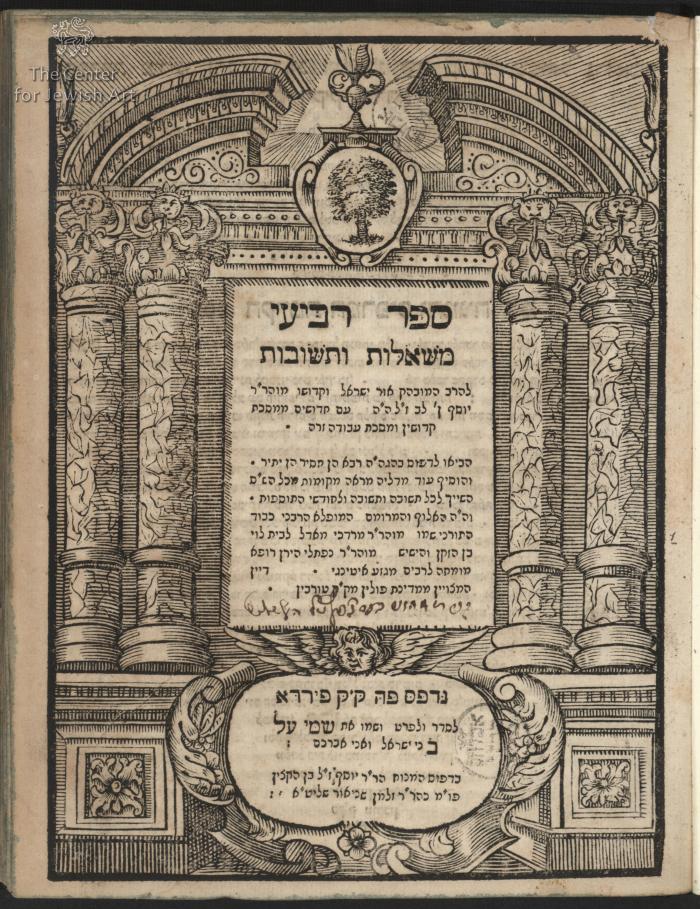Obj. ID: 35733 Sheelot u-teshuvot by Yosef Ibn Lev, Fürth, 1692

sub-set tree:
This text was prepared by William Gross:
Responsa (Latin: plural of responsum, "answers") comprise a body of written decisions and rulings given by legal scholars in response to questions addressed to them. In the modern era, the term is used to describe decisions and rulings made by scholars in historic religious law. The literature of responsa, the asking of Halachic questions of famous Rabbis and their responses, form an important part of Halachic history. They have long been of important use as reference books by Rabbis in all places in answering the questions brought to them.
In rabbinic literature, the Responsa are known as She'elot ve-Teshuvot (Hebrew: שאלות ותשובות "questions and answers") and comprise the body of written decisions and rulings given by poskim ("deciders of Jewish law"). A modern term, used mainly for questions on the internet is Ask the rabbi. Judaism's responsa constitute a special class of rabbinic literature, to be distinguished from the commentaries (meforshim)—devoted to the exegesis of the Hebrew Bible, the Mishnah, the Talmud—and from the codes of law which delineate the rules for ordinary incidents of life.
The responsa literature covers a period of 1,700 years—the mode, style and subject matter have changed as a function of the travels of the Jewish people and of the development of other halakhic literature, particularly the codes. See History of Responsa. Responsa play a particularly important role in Jewish law. The questions forwarded are usually practical, and often concerned with new contingencies for which no provision has been made in the codes of law, and the responsa thus supplement the codes. They therefore function as a source of law, almost as legal precedent, in that they are consulted by later decisors in their rulings; they are also, in turn, incorporated into subsequent codes. See Posek; The sources and process of Halakha. In addition to requests for Halakhic rulings, many of the questions addressed were theoretical in character, particularly amongst the earlier responsa. The responsa accordingly contain rulings on ethics, business ethics, the philosophy of religion, astronomy, mathematics, history, geography, as well as interpretations of passages in the Bible, the Mishnah, the Talmud and the Midrash. Thus, while early Jewish literature has few historical works, many notes on the history of Judaism have been introduced into the responsa.
Responsa thus contain valuable information about the culture of the Jews and the people among whom they lived. Information may also be gleaned about the moral and social relations of the times, occupations, the household, customs, expressions of joy and of sorrow, and recreations and even games. Older responsa are also important for readings and emendations of the Mishnah and the Talmud.
This text comprises the responsa of the 16th century Rabbi Yosef Ibn Lev of Istanbul.


